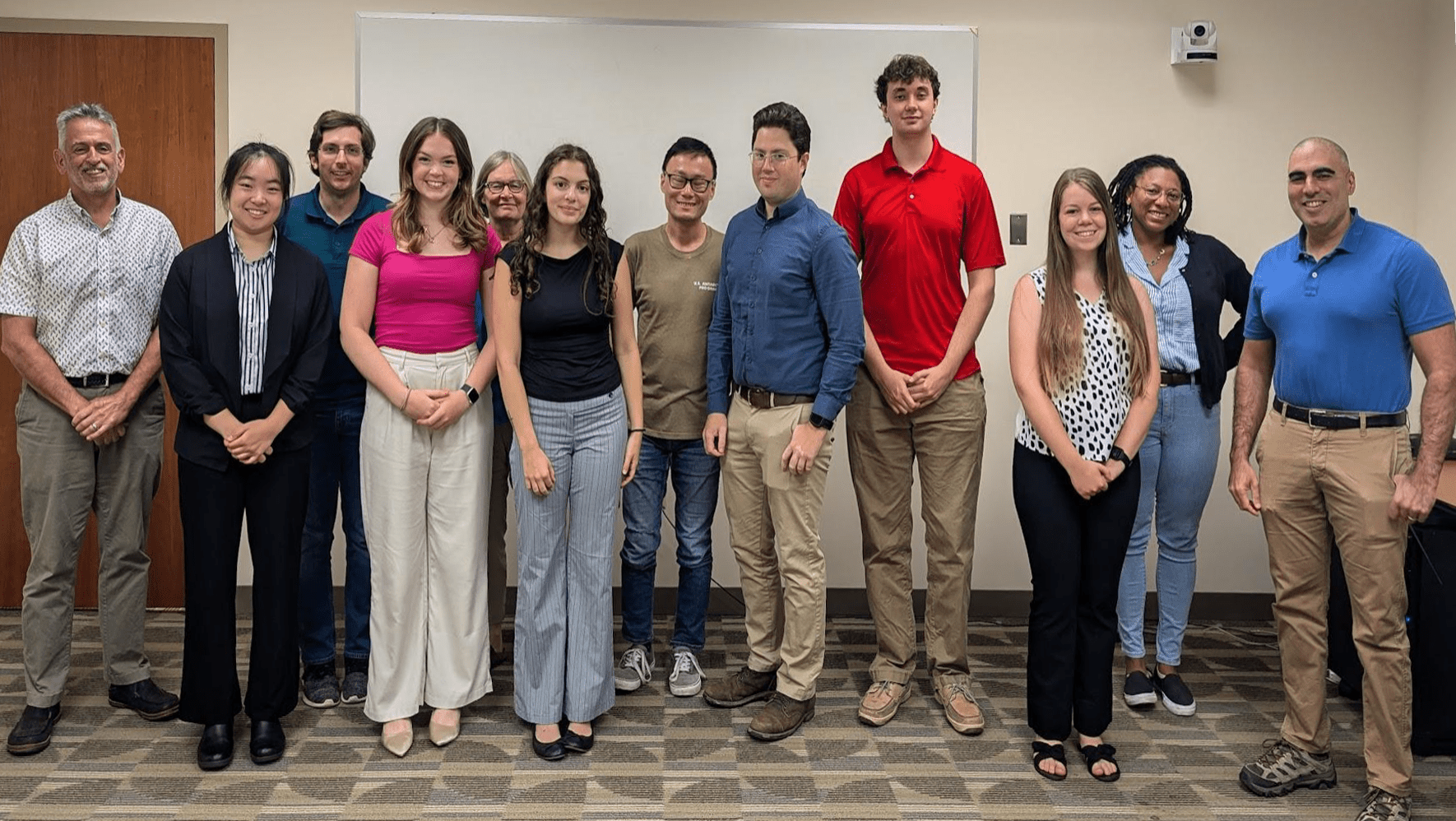
The Climate Resilience Network (CRN), a Grand Challenges Grant supported initiative, launched its first Summer Internship program in June 2024. CRN supported nine undergraduate interns working on various projects, from testing water quality in College Park’s Watts Creek to installing sensors for the Maryland Mesonet. The student interns presented their work in 5-minute lightning talks on August 22, 2024, to an audience of their mentors and peers.
"We are proud of what our interns accomplished over the summer, and look forward to providing the opportunity for future students to make a contribution to further CRN’s mission," said Ralph Ferraro, Director of the CRN and Interim Director of the Earth System Science Interdisciplinary Center (ESSIC).
Summer Internship Project Summaries:
Aiden Hathaway (B.S. Chemistry, 2025) worked with Dr. James Farquhar of the Department of Geology to develop a method to determine the amount and source of methane (CH4) in air samples. If the sources of methane can be accurately identified, work can be done to reduce the amount of it released into the atmosphere. To find out the concentration of methane in an air sample, the methane is separated from the sample in an extensive process to preserve its isotopic composition, which can help determine the source of methane in that sample.
Duncan Santerre (B.S. Atmospheric and Oceanic Sciences, 2026) worked with Dr. Russell Dickerson and Dr. Xinrong Ren of the Department of Atmospheric and Oceanic Sciences to provide comprehensive and qualitative emissions data for greenhouse gases and pollutants from oil and gas production basins and urban and agricultural areas. Duncan traveled to Salt Lake City, UT to measure the amounts of greenhouse gases in the air in the valley between the Wasatch and Oquirrh mountain ranges.
Jacob Keeley (B.S. Chemistry, 2025) worked with Dr. James Farquhar to improve headspace equilibration methods in water samples. Headspace is the air above a substance in a closed container. Headspace equilibration allows scientists to determine the concentration of methane dissolved in water.
Zoe Schlossnagle (B.S. Physics, Minor in Computer Science, 2025) worked with Dr. Mong-Han Huang of the Department of Geology to investigate the rock strength and water content in different landscapes by using near-surface geophysical techniques. They are interested in understanding the hydrology of groundwater in a given area.
Ross Clark (B.S. Geology, 2025) worked with Dr. Karen Prestegaard of the Department of Geology to determine how increasingly severe storms are affecting sediment load in the Anacostia River watershed.
Jessica Zhou (B.S. Computer Science, Minor in Statistics and ACES, 2027) worked with a team led by Dr. James Hyde of the Department of Atmospheric and Oceanic Sciences to ensure that all parts of the Maryland Mesonet are functioning properly. She identified parts that needed to be replaced, improved the Mesonet website, and performed other quality checks.
Katherine Lehman (B.S. Atmospheric and Oceanic Sciences, 2025) worked with Dr. James Hyde to use Mesonet data to determine how the Chesapeake Bay impacts regional weather conditions. She found that the temperature difference between the water and land causes bay breeze events and changes in wind direction. Katherine also assisted in the installation of a Mesonet tower.
Katherine Cox (B.S. Geology, 2026) worked with Michael Maddox of the Earth System Science Interdisciplinary Center and Climate Resilience Network to determine whether Chesapeake Bay wetlands are sustaining themselves as sea levels rise. WHILE The results of her study were inconclusive, she found preliminary evidence of a correlation between total sediment load and marsh area lost along the Patuxent River in Maryland. This could have major implications for marsh resilience in the Chesapeake Bay watershed.
Madeleine Seppi (B.S. Environmental Science and Technology, 2025) worked with Dr. Sujay Kaushal of the Department of Geology to determine the relationship between forest cover percentage in riparian zones and the concentration of salt ions in freshwater. Her study of Watts Branch in Rockville, MD found that the concentration of salt ions in the water decreased as vegetation in the riparian zone increased. This, along with reducing pollutant sources could greatly improve the health of freshwater systems in the Chesapeake Bay watershed.
All the interns’ presentation slides will be posted on the CRN website.
